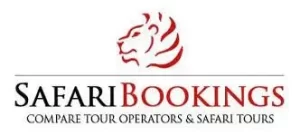Why Visit Ngorongoro Over Serengeti? The Ultimate Safari Comparison
When planning a Tanzanian safari, travelers often debate whether to visit Ngorongoro Crater or Serengeti National Park. While both offer incredible wildlife experiences, Ngorongoro provides unique advantages that make it a must-visit destination for certain types of travelers. This 3000+ word guide will explore 10 compelling reasons to choose Ngorongoro over Serengeti, helping you decide which park better suits your safari dreams.
1. Introduction: Two Icons, One Decision
Tanzania’s northern safari circuit boasts two of Africa’s most famous wildlife destinations:
-
Serengeti National Park: 14,750 km² of endless plains famous for the Great Migration
-
Ngorongoro Conservation Area: Includes the world’s largest intact volcanic caldera (260 km²)
While most safaris combine both, there are key reasons to prioritize Ngorongoro if you:
✔ Want guaranteed Big Five sightings
✔ Have limited time
✔ Prefer dramatic landscapes
✔ Seek cultural interactions
✔ Travel in the green season
Let’s explore why Ngorongoro deserves your attention.
2. Geological Wonder: A Lost World Ecosystem
Ngorongoro Crater is the world’s largest inactive, intact volcanic caldera – a true natural wonder:
-
Formation: Created when a massive volcano collapsed 2-3 million years ago
-
Dimensions: 19 km wide, 600m deep walls (creating a natural enclosure)
-
Unique Features:
-
Permanent freshwater lakes
-
Swamps, forests, and grasslands in one contained area
-
Microclimate different from surrounding plains
-
Why it matters: This contained ecosystem creates higher wildlife densities than the sprawling Serengeti.
3. Guaranteed Big Five Sightings
Ngorongoro offers the best odds in Africa for seeing all Big Five animals in one day:
| Animal | Ngorongoro Advantage | Serengeti Challenge |
|---|---|---|
| Lion | 70+ in crater (easy sightings) | Spread across vast plains |
| Elephant | Large bulls in forest areas | Migratory herds harder to track |
| Buffalo | Massive herds on crater floor | Smaller scattered groups |
| Leopard | Regular sightings at Lerai Forest | More elusive across vast terrain |
| Rhino | 30+ black rhinos (best in Tanzania) | Extremely rare in Serengeti |
Key Fact: Ngorongoro has East Africa’s highest density of predators per square kilometer.
4. Time Efficiency: More Wildlife in Less Time
For travelers with limited days, Ngorongoro delivers maximum wildlife in minimum time:
-
Serengeti Challenge: May require 3+ days to see diverse species
-
Ngorongoro Advantage: 80% of animals visible in a single game drive
Sample Itinerary Comparison:
| Park | Time Needed | Expected Sightings |
|---|---|---|
| Ngorongoro | 1 full day | Big Five + hyenas, flamingos, jackals |
| Serengeti | 3 days minimum | Migration-dependent sightings |
Best For: Time-crunched travelers who want quality over quantity.
5. Year-Round Wildlife Viewing
Unlike Serengeti (where wildlife moves with rains), Ngorongoro offers consistent sightings all year:
-
Dry Season (Jun-Oct): Concentrated animals at water sources
-
Wet Season (Nov-May): Lush landscapes, baby animals, fewer tourists
-
Special Perk: The crater’s permanent water keeps animals resident year-round
Migration Comparison:
-
Serengeti: Must time visit for migration (Dec-Jul in south, Aug-Nov in north)
-
Ngorongoro: Always has resident populations regardless of migration location
6. Unmatched Scenery Diversity
Ngorongoro packs multiple ecosystems into one compact area:
-
Lerai Forest (leopard habitat)
-
Magadi Lake (flamingo flocks)
-
Ngoitokitok Springs (hippo pools)
-
Gorigor Swamp (elephant gathering)
-
Open Grasslands (lion hunting grounds)
Photography Advantage: Shoot forested hills, waterfalls, and wildlife all in one frame – impossible in Serengeti’s flat plains.
7. Cultural Experiences with Maasai
Ngorongoro Conservation Area allows Maasai villages to coexist with wildlife:
-
Visit Authentic Bomas: Unlike touristy Serengeti villages
-
Guarded by Warriors: See how they protect cattle from lions
-
Unique Permissions: Only place where Maasai herd livestock inside a wildlife area
Top Cultural Activities:
✔ Traditional jumping dances
✔ Spear-making demonstrations
✔ Night stays in manyatta huts
8. Exclusive Luxury Lodges
Ngorongoro’s crater rim offers Africa’s most spectacular safari lodges:
-
&Beyond Ngorongoro Crater Lodge: Opulent Maasai-inspired suites
-
Neptune Ngorongoro: Private butlers and heated floors
-
The Highlands: Eco-luxury domes with crater views
Serengeti Comparison: Lodges are more spread out and lack the dramatic rim locations.
9. Compact Size = Intimate Safaris
The crater’s limited space creates advantages:
-
Fewer Vehicles: Only 6-hour game drives allowed (reduces crowding)
-
Strict Entry Rules: Max 5-6 vehicles at a sighting (vs. 20+ in Serengeti)
-
Private Concessions: Exclusive access at extra cost
Wildlife Impact: Animals are less habituated to vehicles than in busy Serengeti.
10. Conservation Success Story
Ngorongoro represents a model for human-wildlife coexistence:
-
UNESCO World Heritage Site since 1979
-
Black Rhino Sanctuary: Population grew from 12 to 30+ in 20 years
-
Sustainable Tourism: Fees fund local Maasai communities
Serengeti Challenge: Faces greater poaching threats due to vast unprotected borders.
When to Choose Serengeti Instead
While Ngorongoro excels in many areas, prioritize Serengeti if you:
✔ Want to see the Great Migration river crossings
✔ Prefer longer, more exploratory game drives
✔ Seek cheetah sightings (more common in Serengeti)
✔ Are visiting Dec-Mar (calving season in southern Serengeti)
Why Ngorongoro Wins for Many Travelers
While both parks are spectacular, Ngorongoro Crater offers:
✅ Guaranteed Big Five sightings in one day
✅ Year-round wildlife regardless of migration
✅ Stunning geological setting unmatched in Africa
✅ Cultural depth with authentic Maasai experiences
✅ Time efficiency for shorter trips
Final Verdict: For first-time visitors, photographers, or those with limited time, Ngorongoro often provides a more rewarding safari experience than the Serengeti alone.









